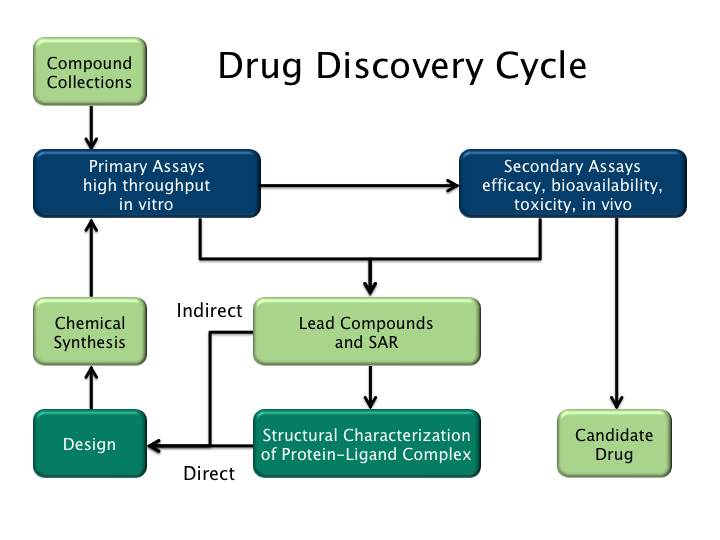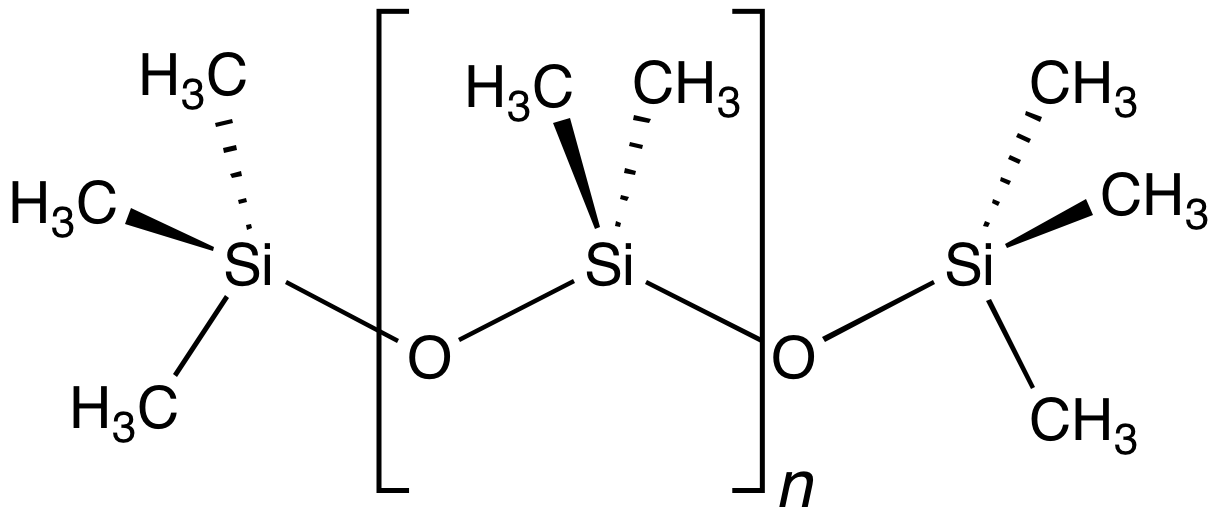|
Bioisostere
In medicinal chemistry, bioisosteres are chemical substituents or groups with similar physical or chemical properties which produce broadly similar biological properties in the same chemical compound. In drug design, the purpose of exchanging one bioisostere for another is to enhance the desired biological or physical properties of a compound without making significant changes in chemical structure. The main use of this term and its techniques are related to pharmaceutical sciences. Bioisosterism is used to reduce toxicity, change bioavailability, or modify the activity of the lead compound, and may alter the metabolism of the lead. Examples Classical bioisosteres Classical bioisosterism was originally formulated by James Moir and refined by Irving Langmuir as a response to the observation that different atoms with the same valence electron structure had similar biological properties. For example, the replacement of a hydrogen atom with a fluorine atom at a site of metaboli ... [...More Info...] [...Related Items...] OR: [Wikipedia] [Google] [Baidu] |
Drug Design
Drug design, often referred to as rational drug design or simply rational design, is the invention, inventive process of finding new medications based on the knowledge of a biological target. The drug is most commonly an organic compound, organic small molecule that activates or inhibits the function of a biomolecule such as a protein, which in turn results in a therapeutic effect, therapeutic benefit to the patient. In the most basic sense, drug design involves the design of molecules that are complementary in shape and electric charge, charge to the biomolecular target with which they interact and therefore will bind to it. Drug design frequently but not necessarily relies on molecular modelling, computer modeling techniques. This type of modeling is sometimes referred to as computer-aided drug design. Finally, drug design that relies on the knowledge of the three-dimensional structure of the biomolecular target is known as structure-based drug design. In addition to small molec ... [...More Info...] [...Related Items...] OR: [Wikipedia] [Google] [Baidu] |
Medicinal Chemistry
Medicinal or pharmaceutical chemistry is a scientific discipline at the intersection of chemistry and pharmacy involved with drug design, designing and developing pharmaceutical medication, drugs. Medicinal chemistry involves the identification, synthesis and development of new chemical entity, new chemical entities suitable for therapeutic use. It also includes the study of existing drugs, their biological properties, and their quantitative structure-activity relationships (QSAR). Medicinal chemistry is a highly interdisciplinary science combining organic chemistry with biochemistry, computational chemistry, pharmacology, molecular biology, statistics, and physical chemistry. Compounds used as medicines are most often organic compounds, which are often divided into the broad classes of Small molecule, small organic molecules (e.g., atorvastatin, fluticasone, clopidogrel) and "biologic medical product, biologics" (infliximab, erythropoietin, insulin glargine), the latter of whic ... [...More Info...] [...Related Items...] OR: [Wikipedia] [Google] [Baidu] |
Classical Bioisosteres 2
Classical may refer to: European antiquity *Classical antiquity, a period of history from roughly the 7th or 8th century B.C.E. to the 5th century C.E. centered on the Mediterranean Sea *Classical architecture, architecture derived from Greek and Roman architecture of classical antiquity *Classical mythology, the body of myths from the ancient Greeks and Romans *Classical tradition, the reception of classical Greco-Roman antiquity by later cultures *Classics, study of the language and culture of classical antiquity, particularly its literature *Classicism, a high regard for classical antiquity in the arts Music and arts *Classical ballet, the most formal of the ballet styles *Classical music, a variety of Western musical styles from the 9th century to the present *Classical guitar, a common type of acoustic guitar *Classical Hollywood cinema, a visual and sound style in the American film industry between 1927 and 1963 *Classical Indian dance, various codified art forms whose theor ... [...More Info...] [...Related Items...] OR: [Wikipedia] [Google] [Baidu] |
Phenyl
In organic chemistry, the phenyl group, or phenyl ring, is a cyclic group of atoms with the formula , and is often represented by the symbol Ph (archaically φ) or Ø. The phenyl group is closely related to benzene and can be viewed as a benzene ring, minus a hydrogen atom, which may be replaced by some other element or compound to serve as a functional group. A phenyl group has six carbon atoms bonded together in a hexagonal planar ring, five of which are bonded to individual hydrogen atoms, with the remaining carbon bonded to a substituent. Phenyl groups are commonplace in organic chemistry. Although often depicted with alternating double and single bonds, the phenyl group is chemically aromatic and has equal bond lengths between carbon atoms in the ring. Nomenclature Usually, a "phenyl group" is synonymous with and is represented by the symbol Ph (archaically, Φ), or Ø. Benzene is sometimes denoted as PhH. Phenyl groups are generally attached to other atoms or groups. Fo ... [...More Info...] [...Related Items...] OR: [Wikipedia] [Google] [Baidu] |
Patent
A patent is a type of intellectual property that gives its owner the legal right to exclude others from making, using, or selling an invention for a limited period of time in exchange for publishing an sufficiency of disclosure, enabling disclosure of the invention."A patent is not the grant of a right to make or use or sell. It does not, directly or indirectly, imply any such right. It grants only the right to exclude others. The supposition that a right to make is created by the patent grant is obviously inconsistent with the established distinctions between generic and specific patents, and with the well-known fact that a very considerable portion of the patents granted are in a field covered by a former relatively generic or basic patent, are tributary to such earlier patent, and cannot be practiced unless by license thereunder." – ''Herman v. Youngstown Car Mfg. Co.'', 191 F. 579, 584–85, 112 CCA 185 (6th Cir. 1911) In most countries, patent rights fall under private la ... [...More Info...] [...Related Items...] OR: [Wikipedia] [Google] [Baidu] |
Etofenprox
Etofenprox is a pyrethroid derivative which is used as an insecticide. Mitsui Chemicals Agro Inc. is the main manufacturer of the chemical. It is also used as an ingredient in flea medication for cats and dogs. General uses Etofenprox is a broad-spectrum insecticide which disturbs insect nervous systems following direct contact or ingestion, and which is active against a broad spectrum of pests. It is used in agriculture, horticulture, viticulture, forestry, animal health and public health against many insect pests, for instance Lepidoptera, Hemiptera, Coleoptera, Diptera, Thysanoptera, and Hymenoptera. In agriculture, etofenprox is used on a broad range of crops such as rice, fruits, vegetables, corn, soybeans, and tea. It is poorly absorbed by roots and little translocation occurs within plants. In the public health sector, etofenprox is used for vector control either by direct application in infested areas or indirectly by impregnating fabrics, such as mosquito nets. Etofenpro ... [...More Info...] [...Related Items...] OR: [Wikipedia] [Google] [Baidu] |
Insecticide
Insecticides are pesticides used to kill insects. They include ovicides and larvicides used against insect eggs and larvae, respectively. The major use of insecticides is in agriculture, but they are also used in home and garden settings, industrial buildings, for vector control, and control of insect parasites of animals and humans. Acaricides, which kill mites and ticks, are not strictly insecticides, but are usually classified together with insecticides. Some insecticides (including common bug sprays) are effective against other non-insect arthropods as well, such as scorpions, spiders, etc. Insecticides are distinct from insect repellents, which repel but do not kill. Sales In 2016 insecticides were estimated to account for 18% of worldwide pesticide sales. Worldwide sales of insecticides in 2018 were estimated as $ 18.4 billion, of which 25% were neonicotinoids, 17% were pyrethroids, 13% were diamides, and the rest were many other classes which sold for less th ... [...More Info...] [...Related Items...] OR: [Wikipedia] [Google] [Baidu] |
Pyrethroid
A pyrethroid is an organic compound similar to the natural pyrethrins, which are produced by the flowers of pyrethrums (''Chrysanthemum cinerariaefolium'' and ''Chrysanthemum coccineum, C. coccineum''). Pyrethroids are used as commercial and household insecticides. In household concentrations pyrethroids are generally harmless to humans. However, pyrethroids are toxic to insects such as bees, dragonflies, mayflies, Horse-fly, gadflies, and some other invertebrates, including those that constitute the base of aquatic and terrestrial food webs. Pyrethroids are toxic to aquatic organisms, especially fish.Pyrethroids fact sheet from the Illinois Department of Public Health. They have been shown to be an effective control measure for malaria outbreaks, through indoor applications. ...
|
Organosilicon
Organosilicon chemistry is the study of organometallic compounds containing carbon–silicon bonds, to which they are called organosilicon compounds. Most organosilicon compounds are similar to the ordinary organic compounds, being colourless, flammable, hydrophobic, and stable to air. Silicon carbide is an ''inorganic'' compound. History In 1863, Charles Friedel and James Crafts made the first organochlorosilane compound. The same year, they also described a "polysilicic acid ether" in the preparation of ethyl- and methyl-o-silicic acid. Extensive research in the field of organosilicon compounds was pioneered in the beginning of 20th century by Frederic S. Kipping. He also had coined the term "silicone" (resembling ''ketones'', though this is erroneous) in relation to these materials in 1904. In recognition of Kipping's achievements, the Dow Chemical Company had established an award in the 1960s that is given for significant contributions to the field of silicon chemistry ... [...More Info...] [...Related Items...] OR: [Wikipedia] [Google] [Baidu] |
Silafluofen
Silafluofen is a fluorinated organosilicon pyrethroid insecticide. Silafluofen is used agriculturally against soil-borne insects such as termites, and as a wood preservative. It is registered in Asia (India, Japan, Taiwan, Vietnam) since at least 1995 for crops such as drupes In botany, a drupe (or stone fruit) is a type of fruit in which an outer fleshy part ( exocarp, or skin, and mesocarp, or flesh) surrounds a single shell (the ''pip'' (UK), ''pit'' (US), ''stone'', or '' pyrena'') of hardened endocarp with a s ..., tea and rice, but has not been notified or authorised in the European Union for example. References Pyrethroids Organofluorides Organosilicon compounds Diphenyl ethers Ethoxy compounds {{Ether-stub ... [...More Info...] [...Related Items...] OR: [Wikipedia] [Google] [Baidu] |
Enzyme
An enzyme () is a protein that acts as a biological catalyst by accelerating chemical reactions. The molecules upon which enzymes may act are called substrate (chemistry), substrates, and the enzyme converts the substrates into different molecules known as product (chemistry), products. Almost all metabolism, metabolic processes in the cell (biology), cell need enzyme catalysis in order to occur at rates fast enough to sustain life. Metabolic pathways depend upon enzymes to catalyze individual steps. The study of enzymes is called ''enzymology'' and the field of pseudoenzyme, pseudoenzyme analysis recognizes that during evolution, some enzymes have lost the ability to carry out biological catalysis, which is often reflected in their amino acid sequences and unusual 'pseudocatalytic' properties. Enzymes are known to catalyze more than 5,000 biochemical reaction types. Other biocatalysts include Ribozyme, catalytic RNA molecules, also called ribozymes. They are sometimes descr ... [...More Info...] [...Related Items...] OR: [Wikipedia] [Google] [Baidu] |






